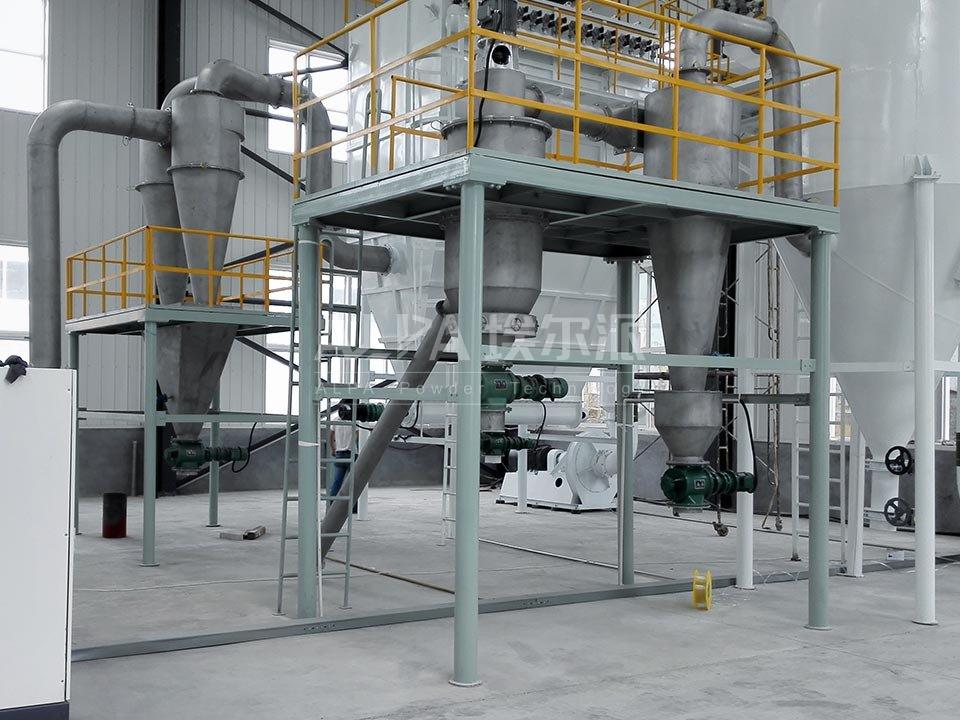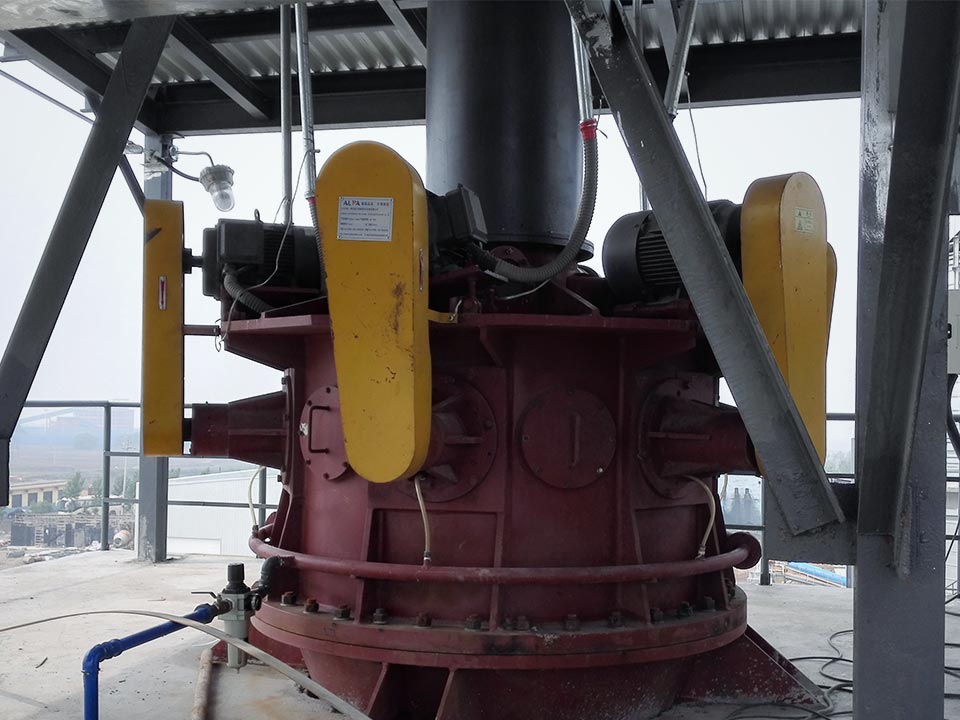The operation points of the air classifier
In the ultra-fine classification equipment, the main product is the air flow classifier. It is necessary to understand the basic operation of the air flow classifier.
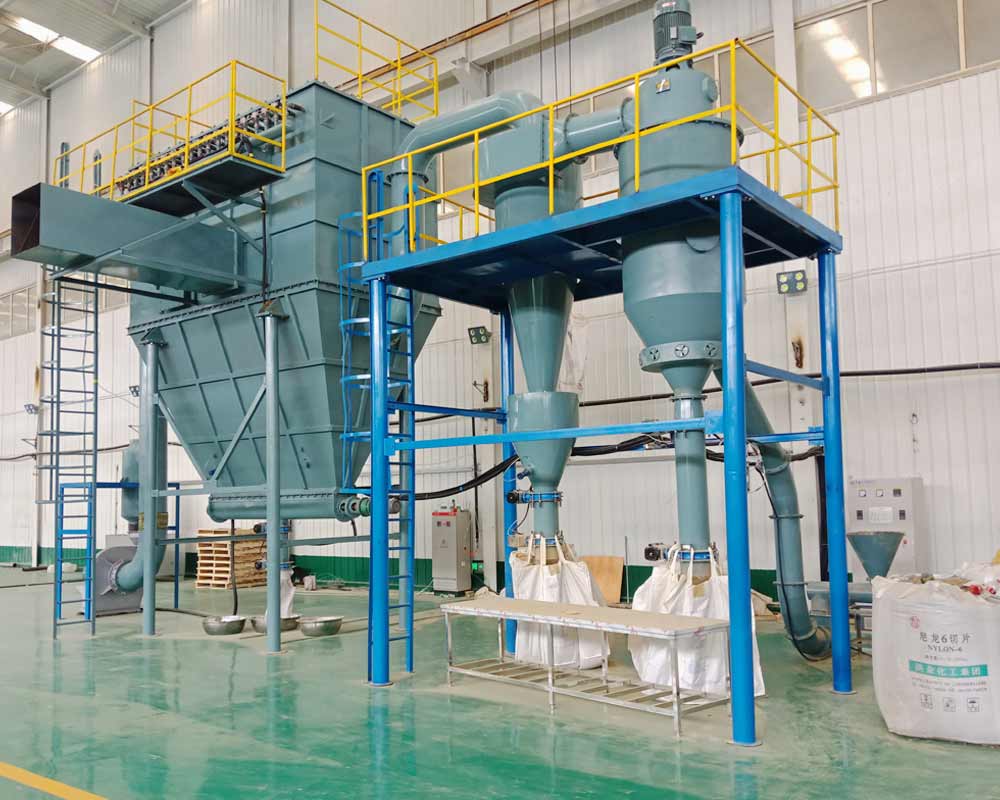
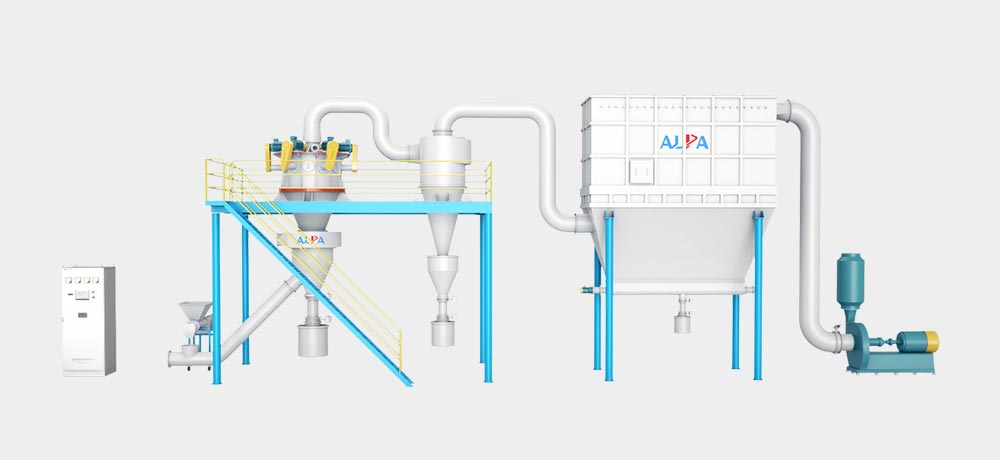
1. Before starting the equipment, check the connection parts, seals and wiring, etc., and start operation only after all checks are correct.
2. The power-on operation should be performed in accordance with the power-on sequence. 3 minutes before shutting down, stop feeding, and then shut down again, the order is opposite to the order of starting up.
3. The feed volume should be determined according to the load of the main engine to ensure that the main engine is under the rated load.
4. The fineness of the separated particles can be adjusted to meet the classification requirements.
5. If it is to separate heat sensitive materials, the power of the main motor should be slightly lower than the rated power.
6. The size of the air volume in the conveying pipeline can be realized by adjusting the air door of the fan.
7. The tension of the belt should be checked to prevent belt slippage.
Correct use of jet mill
The application of the jet mill is very wide, and some matters need to be paid attention to when using it, including the preparation work and operation process before starting the machine, maintenance work and so on.
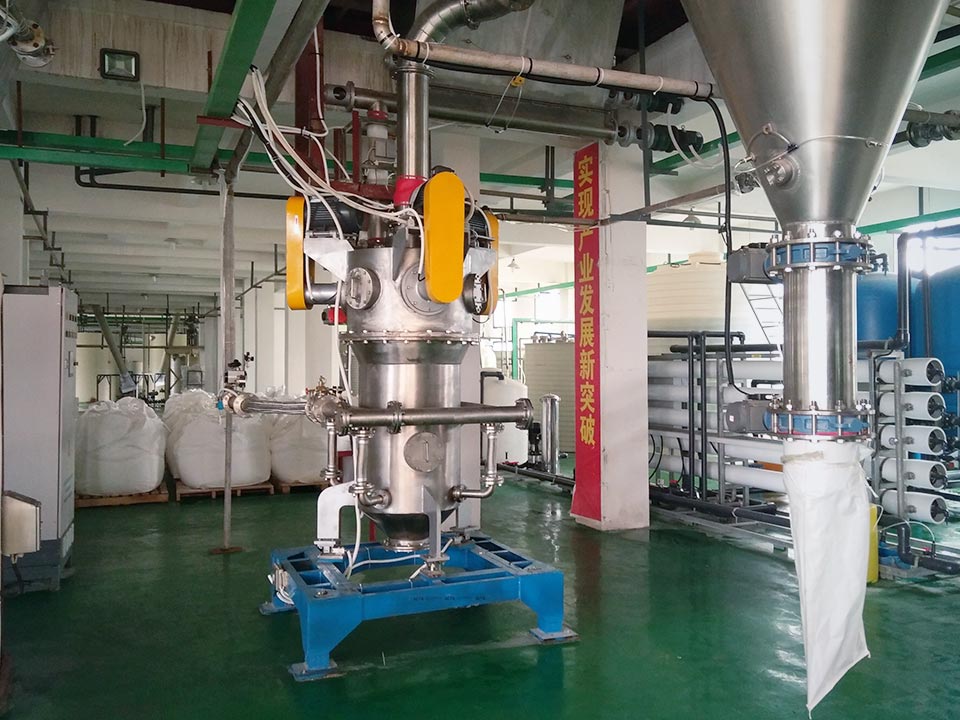
1. Preparation before starting
Check whether the host, connecting machine, pipes and valves are in good condition and can work normally.
2. Turn on
(1) Turn on the compressor power supply, dust collector pressure valve and main air valve, turn on the power switch of the airflow grinder, and turn on the power switch.
(2) Start from zero and gradually adjust it to the specified speed.
(3) Turn on the power of the fan, cyclone separator, dust collector, and charging motor, turn on the total power box number, set the frequency of the inverter, and then start charging.
(4) The particle size of the finished product can be adjusted according to the frequency and loading capacity of the grading wheel.
3. The sequence of stopping is: frequency converter-feeder-main air valve-compressor-grading impeller motor-cyclone material, dust removal switch-fan-general power supply-air compressor.
4. Maintenance
(1) The motor should be lubricated regularly, but the lubricating oil should not be excessive to avoid excessive bearing temperature.
(2) It is important to check the wear of the impeller, screw conveyor and grinding nozzle.
(3) After the material is ground, the rubber powder in the machine should be cleaned to avoid clogging, thereby affecting the grinding effect.
(4) After a period of use, the filter bag should be cleaned or replaced.
5. Matters needing attention
(1) When the unloading equipment is in operation, the unloading outlet cannot be reached to avoid accidents.
(2) The speed of the impeller should not exceed the regulation, otherwise the temperature will be too high and the impeller and motor will be damaged.
(3) The safety valve should be checked regularly to ensure safety.
The details that need to be paid attention to when using the superfine grinder
The ultra-fine pulverizer adopts a unique design scheme. After improvement, the blade is no longer used, and the cutter head and liner are specially installed according to the design structure of the fuselage. In order to improve the grinding efficiency and effect, the ultra-fine pulverizer uses high-speed impact force and shear force to make the material in the grinding cylinder subject to the squeezing, kneading and tearing of the medium, which greatly shortens the grinding time and improves the grinding efficiency; At the same time, because the material is fluidized and each particle has the same stress state, its self-viscous effect can make the finished product form a uniformly dispersed and precise composite particle group, increase the density and increase the bioavailability, and improve the micro-grinding effect and technology.
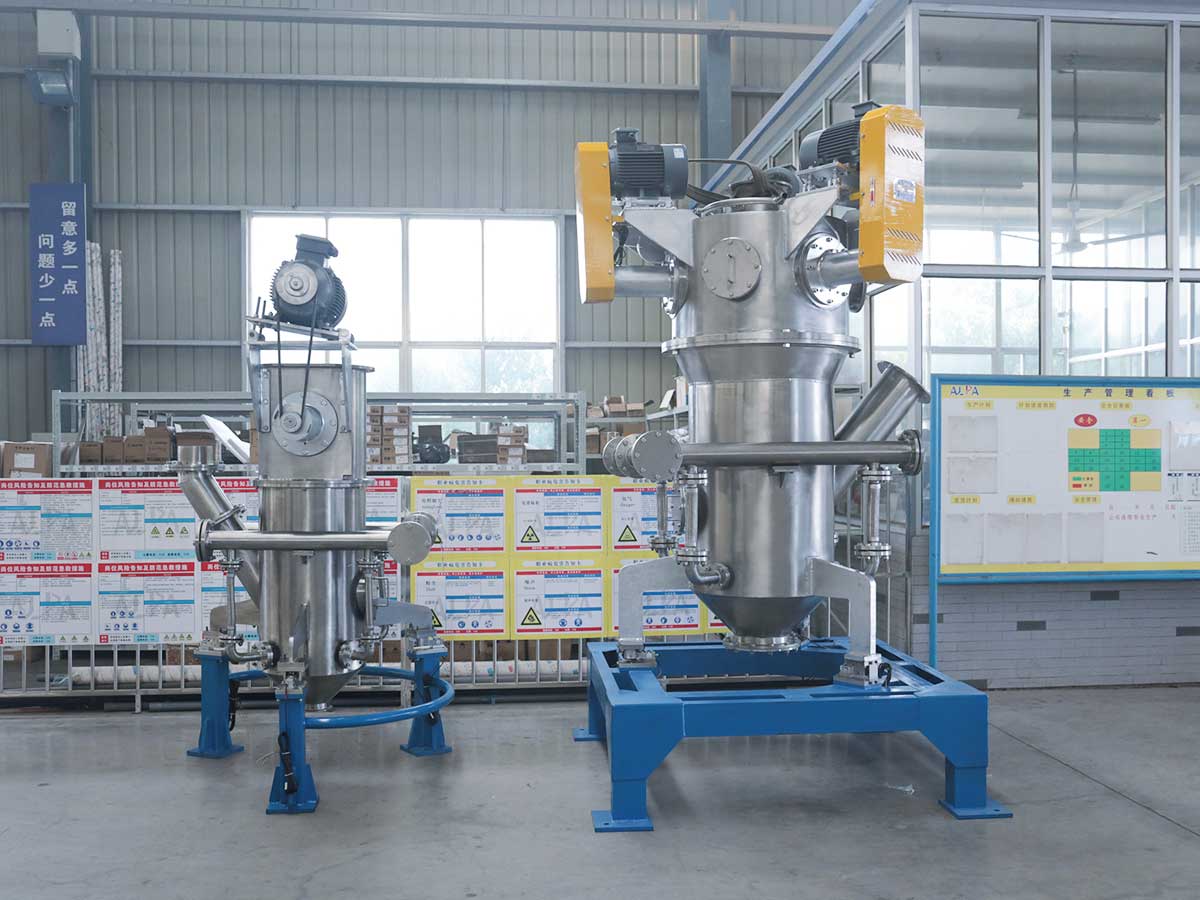
When the ultra-micro grinder is working, the material to be grinded is fed into the machine from the feeding hopper on the side of the machine casing. It relies on the grinding roller device suspended on the plum frame of the main machine to revolve around the vertical axis. At the same time, it rotates on its own. The centrifugal force causes the grinding roller to swing outwards and press tightly on the grinding ring, so that the shovel blade scoops up the material to be sent between the grinding roller and the grinding ring, and the grinding roller achieves the purpose of grinding the material due to the rolling and rolling of the grinding roller.
Wind separation process: After the material is ground, the fan blows the wind into the main frame to blow up the powder, which is sorted by the classification device placed above the grinding chamber. The products that meet the specifications enter the cyclone collector with the wind flow, and are discharged through the powder outlet after being collected, which is the finished product. The wind flows back into the fan from the return duct at the upper end of the large cyclone collector. The wind path is circular and flows under negative pressure. The increased air volume of the circulating air path is discharged through the exhaust pipe between the fan and the main engine and enters the small cyclone collection. Refrigerator for purification treatment.
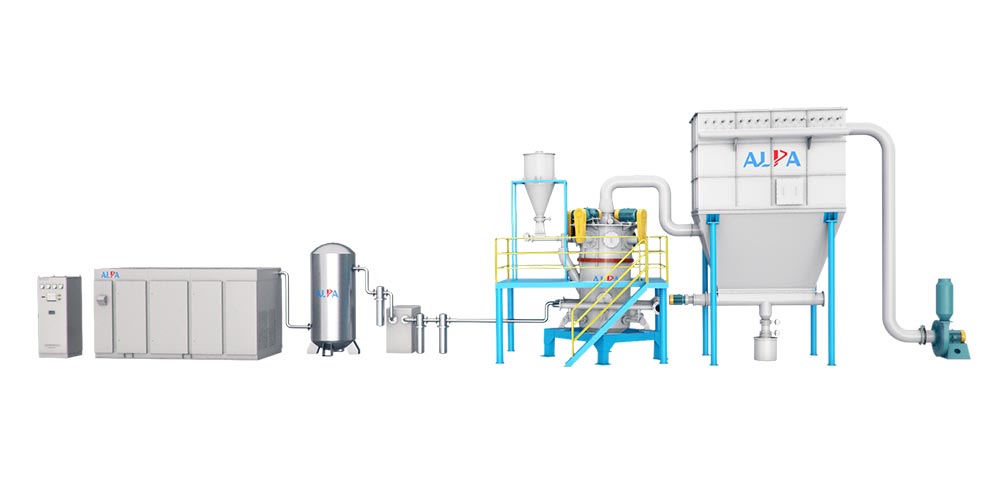
The ultra-micro grinding machine is composed of three parts: main machine, auxiliary machine, and electric control box. It has various properties such as winnowing type, no screen, no net, uniform particle size, etc. The production process is continuous. The ultrafine pulverizer has reached the international advanced level and is widely used in the pulverization of materials in the pharmaceutical, chemical, and food industries. The ultra-micro grinding machine is a horizontal tilting structure, composed of a base, a motor, a crushing chamber, a cover, and a feeding hopper. The feeding hopper and cover can be tilted to a certain angle, which is convenient for cleaning and repairing the material in the grinding chamber. For processing hard and difficult-to-grind materials, it can also be used as a supporting equipment for the previous process of micro-grinding. It is not restricted by the viscosity, hardness, softness and fiber of the material, and it can have a good grinding effect on any material. .
Precautions for ultra-micro grinding machine:
1. General medicinal materials do not need to be screened by the ultra-micro grinder, but for pearls and stalactites that require precise particle size, please pass the screen.
2. The ground material should be dried, especially the viscous material needs to be dried, so that the ultrafine grinder will have a better crushing effect. The volume should not be too large, about the size of a little finger nail.
3. Do not clean the grinding tank.
4. After using the superfine grinding machine, please unplug the power plug to avoid any danger caused by touching the switch.
5. When the speed slows down, please check whether the aggregate cloth tube of the superfine grinder is well ventilated, or there is too much material in the collecting cylinder. Turn off the power switch).
What factors are related to the surface modification effect of ultra-fine powder?
The surface modification of powder is mainly to reduce the energy of ultrafine powder through the powder modifier to achieve the effect of uniform dispersion. The effect of the surface modification of the powder is related to the powder processing technology, the processing technology of the back-end products,the system compatibility,material formula and others.
![]()
1. The nature of powder raw materials
The specific surface area, particle size, particle size distribution, specific surface energy, surface physical and chemical properties, and agglomeration of the powder raw materials all have an impact on the modification effect, and are important factors for selecting powder modifier formulations, process methods and equipment. one.
For example, the surface physical and chemical properties of the powder, such as surface electrical properties, wettability, functional groups or groups, dissolution or hydrolysis characteristics, directly affect its interaction with the powder modifier molecules, thereby affecting the effect of its surface modification . At the same time, the physical and chemical properties of the surface are also one of the important considerations when choosing a surface modification process.
2. Powder modifier formula
The surface modification of the powder is to a large extent achieved by the action of the powder modifier on the surface of the powder. Therefore, the formula (variety, dosage and usage) of the powder modifier has an important influence on the modification effect of the powder surface and the application performance of the modified product. The powder modifier formula is highly targeted, that is, it has the characteristics of "a key to open a lock". The formula of the powder modifier includes selection of varieties, determination of dosage and usage, etc.
When selecting a powder modifier, the properties of the powder raw materials, the use or application field of the product, as well as factors such as process, price, and environmental protection should be considered comprehensively, and based on the structure and properties of the powder modifier and its relationship with the powder. Mechanism of action, targeted selection.
3. Ultra-fine surface modification process
After the powder modifier formula is determined, the surface modification process is one of the most important factors that determine the surface modification effect. The surface modification process should meet the application requirements or application conditions of the powder modifier, have good dispersibility to the powder modifier, and be able to realize the uniform and firm coating of the powder modifier on the powder surface; at the same time, the process is required Simple, good parameter controllability, stable product quality, low energy consumption and low pollution.
Therefore, at least the following factors should be considered when choosing a surface modification process:
①The characteristics of the powder modifier, such as water solubility, hydrolysis, boiling point or decomposition temperature, etc.;
②Whether the front-stage grinding or powder preparation operation is wet or dry. If it is a wet process, consider adopting a wet modification process;
③Surface modification method. The method determines the process. For example, for surface chemical coating, either dry or wet process can be used; but for precipitation coating of inorganic powder modifier, only wet process can be used.
At present, the commonly used surface modification processes mainly include dry process, wet process, pulverization and surface modification combined into one process, drying and powder modifier use methods combined into one process, etc.
What effect does the quality of titanium dioxide have on the ink?
In the manufacture of various types of inks, the proportion of titanium dioxide used is relatively large, ranging from 25% to 50%, and some are even larger. Therefore, titanium dioxide plays a vital role in the quality of the ink.
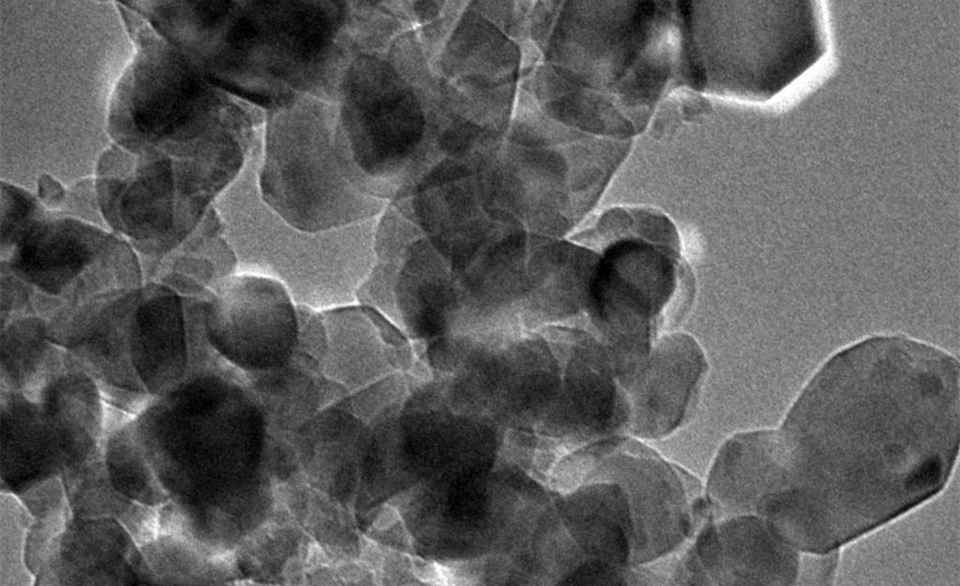
- Impact on ink whiteness
(1) The impact of impurities in the titanium dioxide on the whiteness of the ink. Generally speaking, if a small amount of iron, chromium, cobalt, copper and other impurities are mixed into the titanium dioxide, the prepared ink will produce color shift and reduce the whiteness. This is caused by the impurity ions in the titanium dioxide, especially metal ions, which distort the crystal structure of the titanium dioxide and lose its symmetry. Rutile-type titanium dioxide is more sensitive to impurities. For example, when the content of iron oxide in rutile-type titanium dioxide is greater than 0.003%, it will show color, while its content in anatase-type titanium dioxide is greater than 0.009%. Color reaction. Therefore, it is very important to choose fine, impurity-free titanium dioxide.
(2) The influence of the shape, size and distribution of titanium dioxide particles on the whiteness. High-quality titanium dioxide particles are smooth and have no edges or corners. If you use titanium dioxide with angular edges on the surface of the particles, it will greatly weaken the reflection of light and reduce the whiteness of the ink. The size of titanium dioxide particles should be controlled within 0.2~0.4μm, which is equivalent to about 1/2 of the wavelength of visible light, in order to obtain high scattering ability and make the color appear whiter. When the particle size is less than 0.1μm, the crystal is transparent. If the particle size exceeds 0.5μm, the light scattering ability of the pigment will be reduced and the whiteness of the ink will be affected. For this reason, the particle size of titanium dioxide is required to be suitable and evenly distributed to show good whiteness.
- Influence on ink hiding power
(1) The refractive index of the titanium dioxide crystal itself will directly affect the hiding power of the ink. Generally, the refractive index of titanium dioxide is the best among white pigments. When preparing white ink, titanium dioxide with high refractive index should be used to enhance the hiding power of white ink.
(2) The influence of the particle size, particle structure and dispersibility of titanium dioxide on the hiding power of white ink. Generally, in the range greater than 1/2 of the visible light wavelength, the smaller the particle size, the smoother the particle surface, the better the dispersion of titanium dioxide in the resin binder, and the stronger its hiding power. Because titanium dioxide itself has an obvious crystal structure, its refractive index is larger than that of the vehicle, and the greater the difference in refractive index between the two, the stronger the hiding power of the titanium dioxide used. Practice has proved that rutile titanium dioxide has better hiding power than anatase titanium dioxide, so it is more widely used in ink manufacturing.
- Influence on ink tinting power
The tinting power of titanium dioxide depends on its ability to scatter visible light, and it has a direct effect on the tinting power of the ink. The larger the scattering coefficient, the stronger the tinting power; the higher the refractive index of the titanium dioxide, the stronger the tinting power. Titanium dioxide is the product with the highest refractive index among white pigments, and the refractive index of rutile titanium dioxide is higher than that of anatase titanium dioxide. Therefore, the choice of titanium dioxide is to choose titanium dioxide with strong scattering ability and high refractive index.
- Impact on dispersion performance
Whether the shape of the titanium dioxide particles and the light reflection are uniform, directly affect the dispersion performance of the titanium dioxide. If the surface of the titanium dioxide particles is smooth and the reflection is uniform, the dispersibility is good, and the prepared white ink has good gloss and whiteness. On the contrary, the surface of the particles is rough and diffuse reflection increases, which will greatly reduce the gloss and poor dispersion. , Directly affect the whiteness and transfer performance of the white ink. For this reason, titanium dioxide must be processed before it can be used.
In summary, with the rapid development of packaging and publishing and printing industries, the market demand for inks will increase day by day. As a very important white pigment in inks, titanium dioxide has many properties and functions that cannot be replaced by any other material. Therefore, the amount of titanium dioxide used in inks will increase year by year, and the market application prospects will be very broad.
Article source: China Powder Network
Maintenance of air classifier equipment
Air current classifier is a kind of air classification equipment. The classifier, cyclone separator, dust collector and induced draft fan constitute a classification system. It has been widely used to purify quartz, feldspar, mica, kaolin, magnesium oxide, etc.
Under the action of the suction of the fan, the air flow classifier moves the materials to the classification area at a high speed from the inlet of the lower end of the classifier along with the upward air flow. Under the effect of the strong centrifugal force generated by the high-speed rotating classification turbine, the coarse and fine materials are separated. The fine particles that meet the particle size requirements enter the cyclone separator or dust collector through the gap between the grading wheel blades for collection.
After the coarse particles entrained by the air classifier collide with the barrel wall, the speed disappears and descends to the secondary tuyere along the barrel wall. Coarse particles and fine particles are separated by intense elution with secondary air. The fine particles rise to the classification zone for secondary classification, and the coarse particles fall to the discharge port for discharge.

Machinery also needs constant protection from maintenance personnel. Practice has proved that the service life of equipment depends to a large extent on the quality of maintenance. In order to ensure the safe operation of equipment, the following are some common protection methods for air classifiers:
1. Before installing the air classifier, clean the pneumatic conveying pipeline with compressed air.
2. After the grading wheel has been running for a period of time (usually three months), the usage should be checked in time.
3. The motor should be placed in a well-ventilated place, and regularly check whether the cooling fan of the motor is working properly.
4. When starting the air flow classifier, it should be started slowly. The time from zero to working speed should generally not be shorter than 50 seconds.
5. If there is a problem with each pressure reducing valve, it should be replaced and repaired in time.
6. Thoroughly clean the vacuum cleaner, dust collection room and clean room in the open air at least once a year to avoid agglomeration and deposition.
7. All bearings should be smoothed and protected with lubricating oil regularly, and loose fasteners should be tightened in time to adjust the clearance of moving parts.
What are the characteristics of the ultra-fine grinder
Superfine grinders are used in many industries such as food, pharmaceuticals, industry, etc. The advantages of superfine grinders are also very significant.
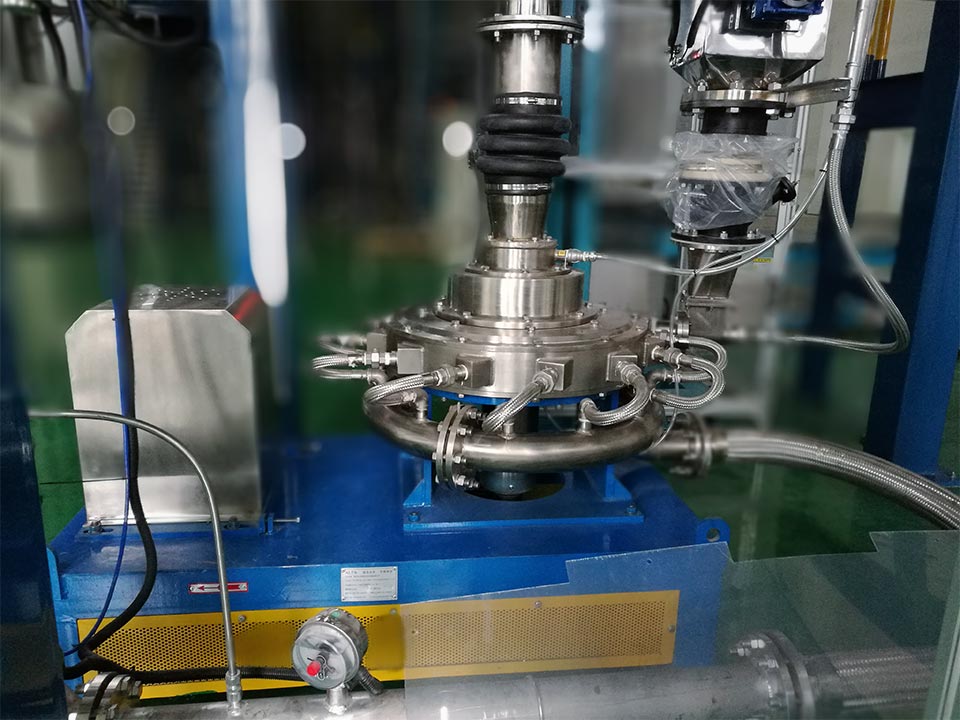
1. High grinding efficiency: almost no loss and no residue. Under the two-way action of high-speed impact force and shear force, the grinding time is greatly shortened and the grinding efficiency is improved.
2. High grinding fineness: most animal and plant materials can be ground to 150 mesh to 2500 mesh.
3. The grinding temperature of the ultra-fine grinder is low-in the case of continuous operation, its temperature will not exceed 40 degrees.
4. Low grinding cost: less labor, short time, completely airtight grinding process without dust overflow, and no loss of active ingredients. There is very little material loss, which can greatly reduce production costs.
5. Simple operation: optimal configuration of capacity, to ensure complete discharge of materials, simple operation and material change.
6. Convenient maintenance of the ultra-fine grinder: compact structure, small floor space, convenient maintenance and repair.
7. Clean and hygienic: smooth inside and outside, one machine with multiple functions, reduce pollution and lighten cleaning burden.
8. Wide range of applications: It can be adapted to materials with fibrous, high toughness, high hardness or a certain moisture content. For pollen and other spore plants and other materials that require cell wall breaking, the wall breaking rate is higher than 95%.
9. Improve the environment: The fully enclosed operation has no dust overflow and no slag generation, which can improve the working environment.
10. The safety of the ultra-fine grinder is strong: the parts in contact with the material are all polished stainless steel, and the material is the general material of international medicine and food machinery, avoiding heavy metals such as arsenic, cadmium, mercury, lead, and copper.
Reasons and solutions for the coarse particle size of the ball mill
Too coarse particle size of the ball mill discharge may be due to many reasons, and the solution to each cause will be different. We need to come up with a corresponding diagnosis and treatment plan.
The main reason for the excessively coarse particle size of the ball mill: the “roughness” of the ball mill refers to the abnormal phenomenon that the fineness of the mill product is significantly coarser and difficult to control. It generally appears in the double-chamber open-circuit tube mill with a relatively small length and diameter. Excessive capacity of the coarse grinding chamber and insufficient capacity of the fine grinding chamber are the main reasons for "roughness". In this case, even if the output of the ball mill is appropriately reduced, the fineness of the product is still relatively coarse. The coarseness of the product due to the excessive feeding volume does not belong to this example.
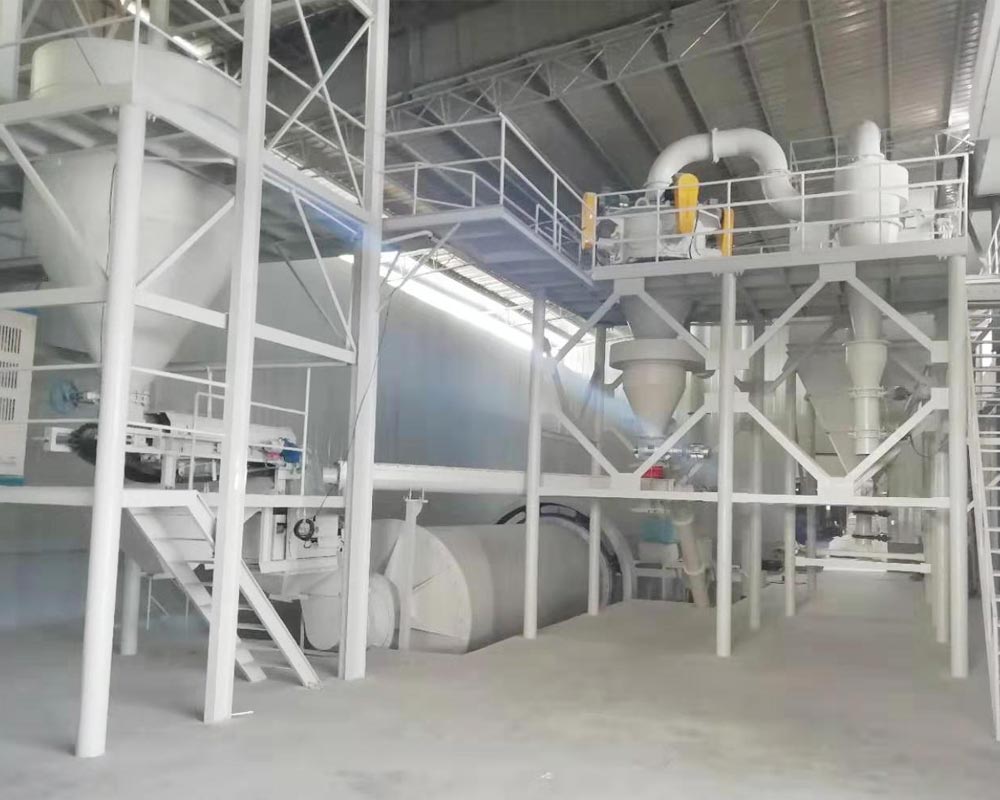
The reason why the grinding capacity of the coarse grinding chamber is significantly higher than that of the fine grinding chamber:
1) The filling rate of the grinding body of the coarse grinding chamber is too much higher than that of the fine grinding chamber;
2) The average ball diameter of the steel balls in the coarse grinding chamber is too large;
3) The length of the fine grinding chamber is too short;
4) The wind speed in the mill is too high;
5) Unreasonable grinding body gradation;
6) The grate seam of the compartment board or the discharge grate board is too large.
When "rough running" occurs, the cause should be found out, and specific measures should be taken to solve it. Generally speaking, if there is no such phenomenon and other conditions have not changed, it is just that the grinding body is newly equipped. It is likely that the average ball diameter of the coarse grinding chamber is too large, the filling rate is too high, or the grinding body gradation is unreasonable. For small tube mills with a small length-to-diameter ratio, use 1 to 2 balls more in the grading of one bin, or appropriately increase the filling rate of the fine grinding bin, and appropriately increase the lifting capacity of the fine grinding bin liner, which can solve this problem. problem.
Measures to improve the lifting capacity of the lining of the fine grinding chamber include: on the one or two circles of the lining before the feed end, every other piece of the lining can be welded with a steel bar or square steel that can form a 15-20mm convex corner. The first few laps of the liner were replaced by a flat liner with a corrugated liner: the severely worn flat liner was replaced with a new liner every few rows.
What to do if the sound of the ball mill is too loud when using it
The ball mill is a commonly used grinding equipment in the beneficiation plant, which plays a pivotal role in the beneficiation process. However, it has the disadvantages of high noise and short noise propagation distance. Not only will it seriously affect the working conditions of employees, but it will also harm their ears and seriously damage their physical and mental health. With the development of modern technology and the improvement of industrial noise pollution, it is very important to reduce the noise during the work of the ball mill through effective termination methods and create a quiet and comfortable production environment.
The ball mill will produce strong vibration and noise when grinding materials, the noise is as high as 100~115dB, which is harmful to the operator and the surrounding environment. The noise of the ball mill is very high, which has always been a concern for the users of the ball mill.
The noise of the ball mill is mainly caused by the collision between the metal balls in the drum, the cylinder wall liner and the processed materials. The sound radiates outward along the liner, the cylinder wall, and the inlet and outlet of the material, including the impact sound between the steel ball and the steel ball, the impact sound between the steel ball and the liner, the impact sound and friction sound of the material. The noise level of the ball mill is related to the diameter and speed of the ball mill, as well as the properties of the material and the block size. The noise of the ball mill is basically steady-state noise, which has a wide frequency band and high sound energy with low, medium and high frequency components. The larger the diameter, the stronger the low frequency component.
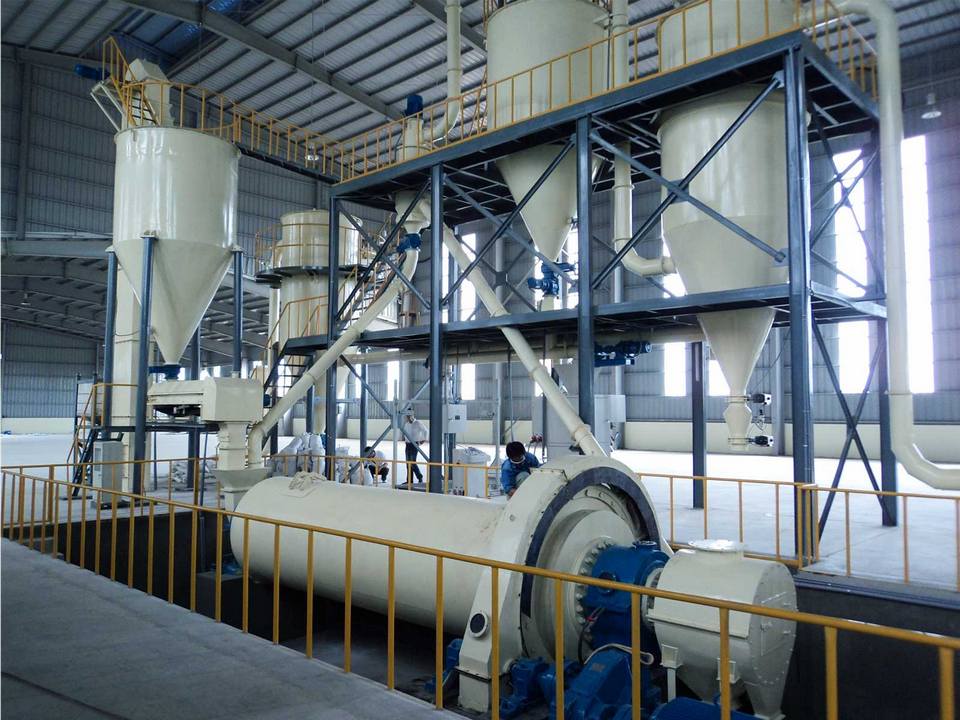
Noise reduction method of ball mill
- Add a soundproof cover to the ball mill
The soundproof cover can be divided into fixed type, movable type and curtain type. The fixed sound insulation cover has high sound insulation, but it will make the ventilation and heat dissipation performance of the workshop worse, and the maintenance and repair of the equipment will be difficult. On the basis of the fixed sound insulation hood, the movable sound insulation hood is improved and the maintenance performance is improved, but the sound insulation capacity is reduced, the ventilation and heat dissipation problems have not been solved, and it needs to occupy more space and space. The curtain-type sound insulation cover was developed to solve the contradiction between the large space occupied by the movable sound insulation cover and the venue, and it has the advantages of disassembly and assembly. The advantages of flexible installation and centralized storage are still poor ventilation and heat dissipation and high prices.
- Replace manganese steel lining with rubber lining
This method is one of the technical measures to radically reduce the noise generated by the cylinder based on the mechanism of the noise generated by the ball mill. The rubber liner is easy to install and has a good damping effect. When the bush is impacted by a steel ball, the impact duration can be increased, and the noise reduction effect is obvious. However, when choosing a rubber liner, attention should be paid to rubber plates with good high temperature resistance and wear resistance. At the same time, a heat-resistant soft rubber pad can be placed between the inner surface of the ball mill drum and the liner. In order to prevent the soft rubber pad from overheating, an industrial felt with a thickness of 10-15mm is placed between the liner of the ball mill and the soft rubber pad. The noise of the ball mill can be reduced below the allowable standard.
- Strengthen the ventilation, heat dissipation and noise reduction treatment of the ball mill equipment
The noise of the ball mill is not only related to the influence of the equipment itself, but also closely related to the production material itself. For many production materials, a large amount of heat is generated during the contact process of steel balls, which may directly affect the effect of noise reduction measures. Therefore, in the working process of the ball mill, attention should be paid to the ventilation and heat dissipation of the ball mill equipment, and the heat generated during the production process should be treated in time.
- Add the ball milling chamber
If conditions permit, concentrate the ball mill room in a special ball mill room, and change the ball mill room into a special soundproof room, the effect will be better than the soundproof cover. However, it is necessary to pay attention to solving the problems of monitoring, indoor heat dissipation and maintenance during the operation of the ball mill.
Bentonite processing technology
Bentonite is a clay rock with montmorillonite as the main mineral component. It often contains a small amount of illite, kaolin, zeolite, feldspar, calcite and other minerals. Bentonite is a precious non-metallic mineral resource with more than 1,000 uses and is known as the "universal material". Bentonite can be divided into calcium-based, sodium-based, magnesium-based, sodium-calcium-based, and magnesium-sodium-based according to the different cations between the montmorillonite layers.
Bentonite is generally white, gray, pink, yellow, brown and black in various colors, and its shape is often earthy cryptocrystalline mass, sometimes in the form of small scales and spherulites. Soft and slippery, water swelling, the maximum water absorption can be 8-15 times its volume, with grease or waxy luster, the fracture is conchoidal or jagged, the hardness is 2 to 2.5; the density is 2 to 2.7g/cm3, Melting point is 1330~1430℃. Bentonite has the properties of swelling, adsorption, suspension, dispersibility, cation exchange, stability, thixotropy, non-toxicity, and cohesiveness.
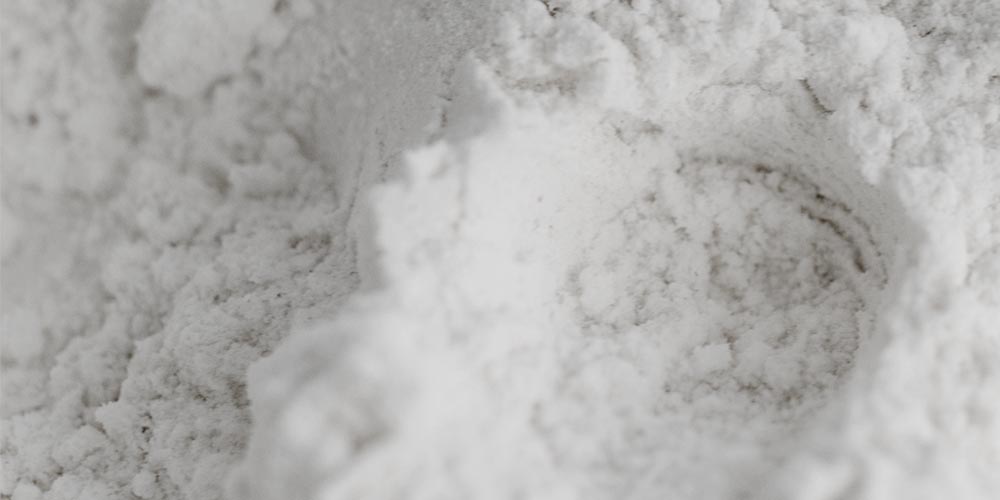
Universal clay can be used as a binder, adsorbent, absorbent, filler, catalyst, alteration agent, flocculant, detergent, stabilizer, thickener, and is widely used in iron ore pellets, casting, drilling, Petroleum, chemical, textile, paper, rubber, agriculture, medicine and other industries. With the development of science and technology, the consumption of bentonite has been extended from the traditional drilling mud and iron ore pellet casting industries to petrochemical, light industry, agriculture, environmental protection, construction and other fields, which puts forward a higher level of processing technology. Require.
Bentonite processing technology-purification
The purification methods of bentonite include chemical purification and physical purification. Physical purification is divided into hand selection, air selection (dry purification), and water selection (wet purification).
- Hand-selected
It is mainly used in the raw soil with high content of montmorillonite, bentonite raw ore → crushing → drying → hand selection → grinding → packaging.
- Dry purification / winnowing
Suitable for ore with high content of montmorillonite (greater than 80%), finer grain size and coarser gangue mineral quartz, feldspar, bentonite ore → natural drying → crushing → air drying → grinding → air separation and classification → packaging
- Wet purification/water selection
It is suitable for low-grade bentonite containing 30%-80% of montmorillonite content in raw ore, or bentonite containing feldspar and quartz with finer particle size, bentonite raw ore → crushing → pulping (adding dispersant) → sedimentation and separation → Centrifugal separation of the suspension (adding flocculant) → filtration → drying → disintegration and depolymerization → packaging.
- Chemical purification
The method of using chemical reagents to chemically react with the impurity minerals in bentonite to remove them, usually using strong alkali to remove cristobalite and quartz, the reaction principle is: 2NaOH + SiO2 = NaSiO3 + H2O.
- Compound purification
In the actual purification process, physical and chemical methods are often used for composite purification. Raw ore → surface treatment of minerals with hyposulfite or sodium dithionite → treatment of bentonite with alkali at a temperature greater than 60°C → flushing with dehydration water at least once → renew Configure suspension → homogenizer treatment → drying → crushing → packaging and transportation.
Bentonite processing technology-modification
The surface modification of bentonite is to use physical, chemical, mechanical and other methods to change the surface structure, surface energy, electrical properties, adsorption performance and reactivity of bentonite, so as to improve the use value of bentonite.
- Mechanical activation
Mechanical force vitality is the process of using mechanical force to improve certain activities and properties of bentonite, including ultrafine pulverization and extrusion.
Ultra-fine crushing: The strength of the effect is related to the crushing time, the type of crushing equipment, the way of mechanical force, and the crushing environment.
Squeezing effect: stripping effect, temperature effect, bond breaking effect.
- Thermal activation
What factors are related to the degree of thermal activation?
It is related to the sintering time: generally, the sintering time is 1 hour.
It is related to the roasting temperature: the roasting temperature is 400-450 degrees Celsius to achieve the purpose of activation.
Comparative data of specific surface area of bentonite before and after roasting
| Adsorbent | Natural bentonite | 400℃ calcined soil | 450℃ calcined soil | 600℃ roasting soil | 700℃ calcined soil |
| Specific surface area (m2/g) | 310 | 360 | 370 | 86 | 40 |
- Acid activation
Bentonite acid activation is the use of various acids (sulfuric acid, nitric acid, hydrochloric acid, oxalic acid) to activate bentonite under certain conditions with different concentrations.
- Organic activation
Wet process: raw ore crushing→dispersed pulping→purification→modification→covering→filtering→drying→crushing→product packaging
Pre-gel method: raw ore crushing → dispersion pulping → modification and purification → water extraction → heating to remove water → pre-gel product
Dry process: purified pin montmorillonite + covering agent → heating and mixing → extrusion → drying → crushing → packaging
Bentonite processing technology-sodium modification
Compared with calcium bentonite, sodium bentonite has higher water absorption and thermal stability, stronger plasticity and cohesiveness, and better colloidal suspension thixotropy and lubricity. Therefore, the sodium modification of calcium-based pot run soil is one of the effective ways to improve its application value and economic value.
- Sodiumization principle
The sodiumization of bentonite is mainly to use Na+ to replace the replaceable cation Ca2+ or Mg2+ between the bentonite crystal layers. The reaction formula is as follows: Ca2+ - montmorillonite + 2Na+=2Na* - montmorillonite + Ca2+
- Sodiumization method
Sodiumization modification mainly includes suspension method (wet method), yard sodiumization method (ageing method) and extrusion method, etc. Raw materials → hand selection → crushing → purification → sodiumization → extrusion → drying → grinding → packaging
After more than 100 years of research and application, bentonite and its deeply developed products have played an important role in the fields of industrial and agricultural production and science. In the future, research on the effective utilization of bentonite should be strengthened, and high-quality, refined and cutting-edge products of bentonite should be vigorously developed, and the development towards the direction of large-scale production and serialization of products.
Article source: China Powder Network

